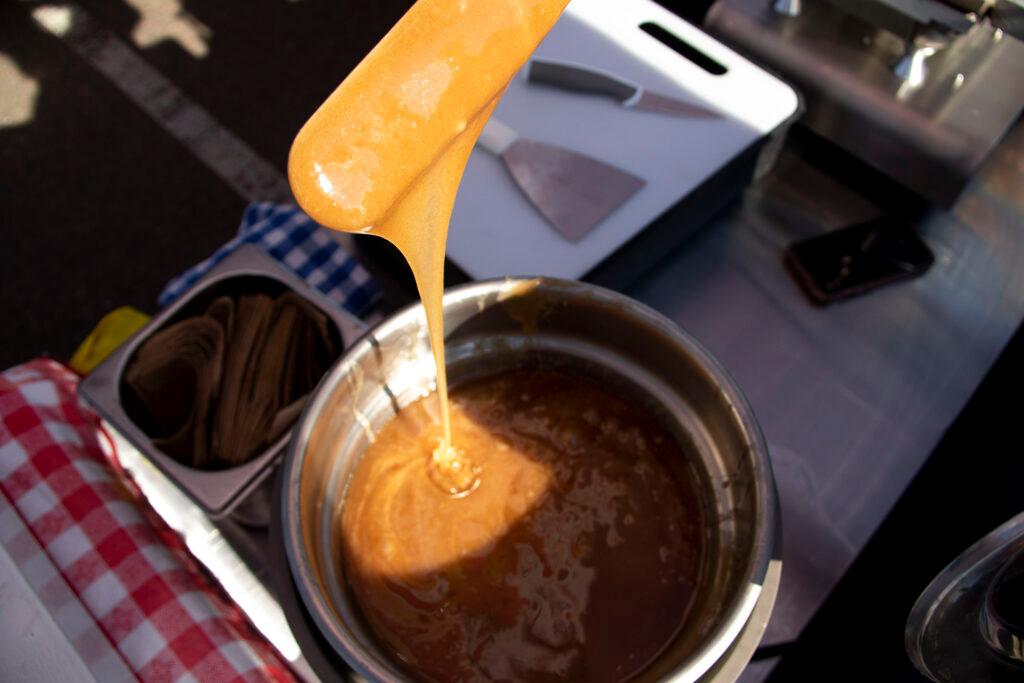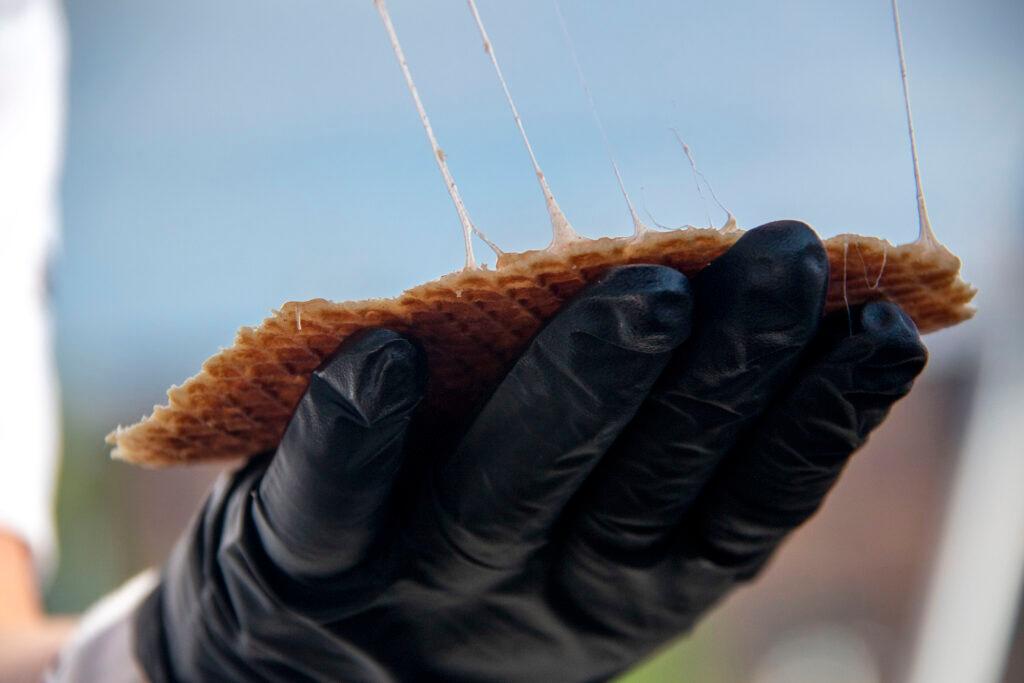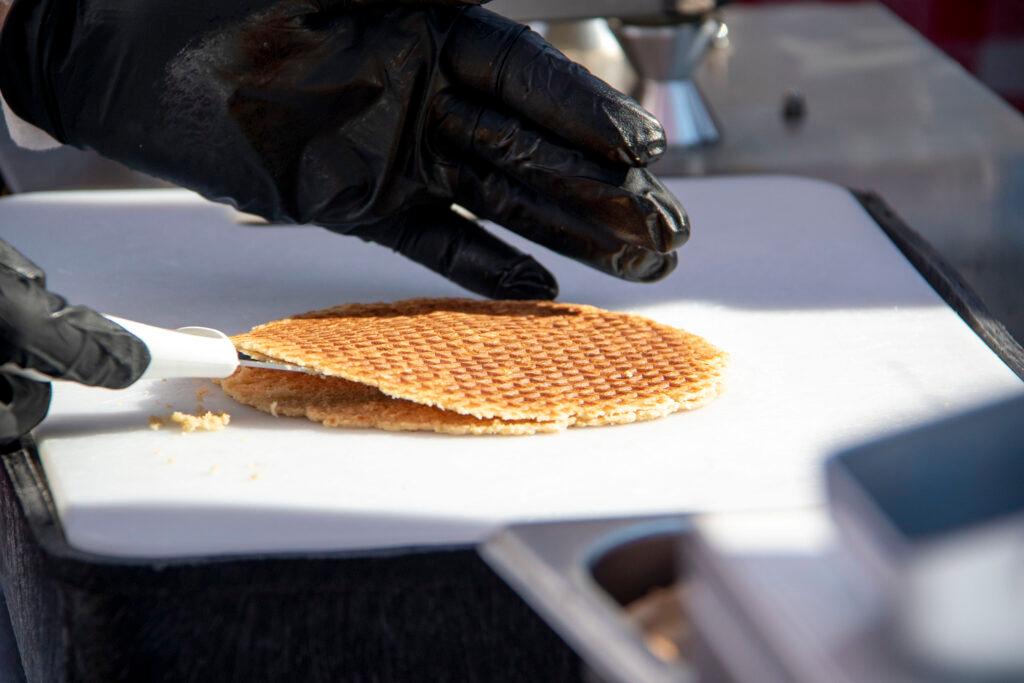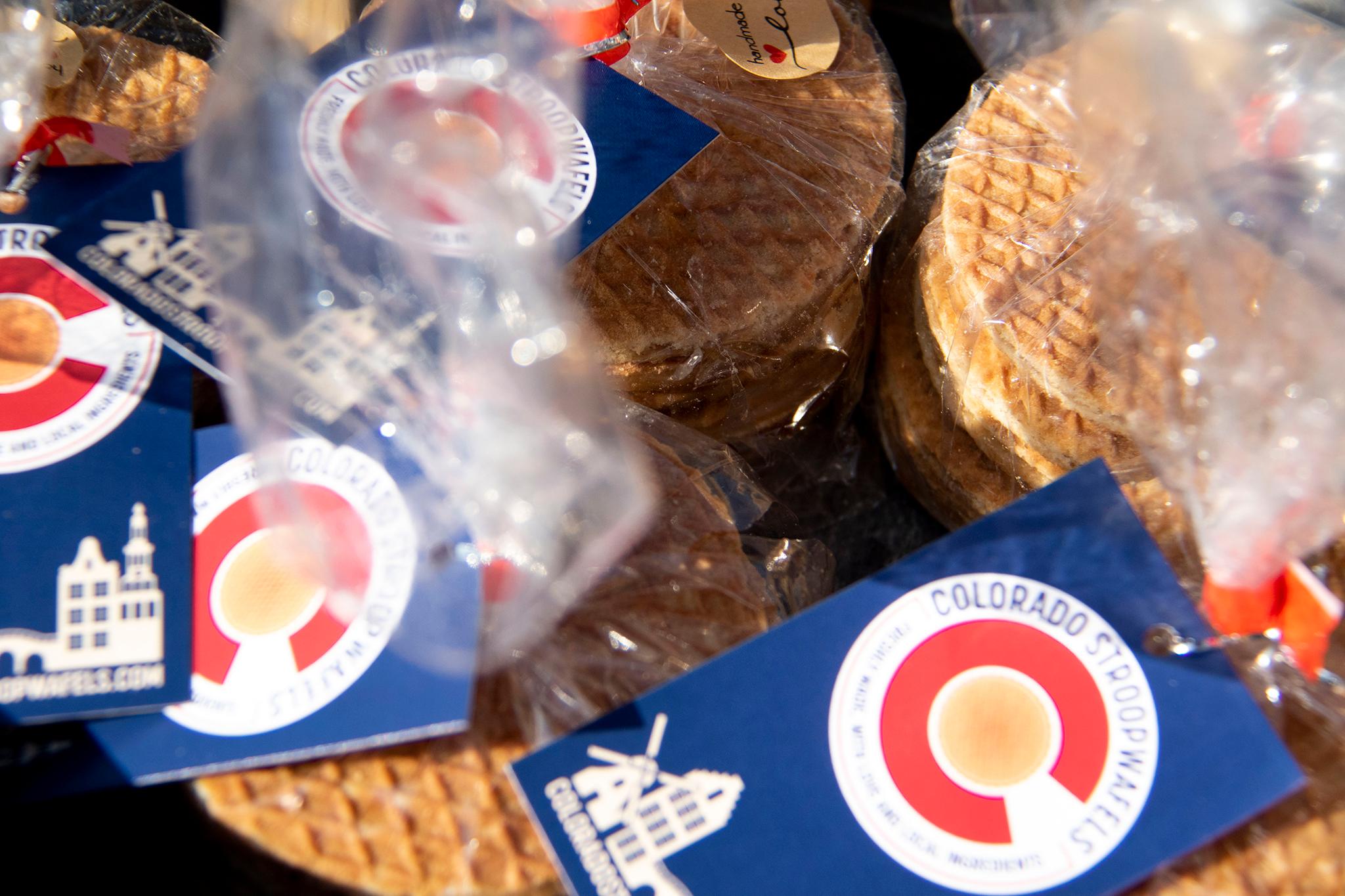
Stroopwafels are round, golden-brown Dutch cookies, inlaid with a shallow diamond pattern and sandwiched together with caramel. Most grocery store versions in the United States are predominantly sweet.
But at their best, hot off a vendor’s iron, stroopwafels are buttery and crisp, with rich notes of brown sugar and cinnamon. Fresh-baked stroopwafels smell like melted butter and caramelized sugar, and each bite offers a warm comfort.
“It reminds me of my youth, and that is why I like them,” Yolande Schmitz said. “It’s this feeling, as a child, that I had these fresh ones on the market.”
Schmitz runs Colorado Stroopwafels, one of the only fresh stroopwafel stands between Montana and Miami. She sells fresh stroopwafels at the Cherry Creek fresh market on Wednesday and Saturday mornings, as well as packages of her pre-made cookies.
“I tried to find a decent stroopwafel, and I couldn’t find it here in America,” said Schmitz, who moved to Colorado from the Netherlands four years ago. “I bake a lot of Dutch cookies and pastries at home, so it was one of these things: let’s try to do it myself.”
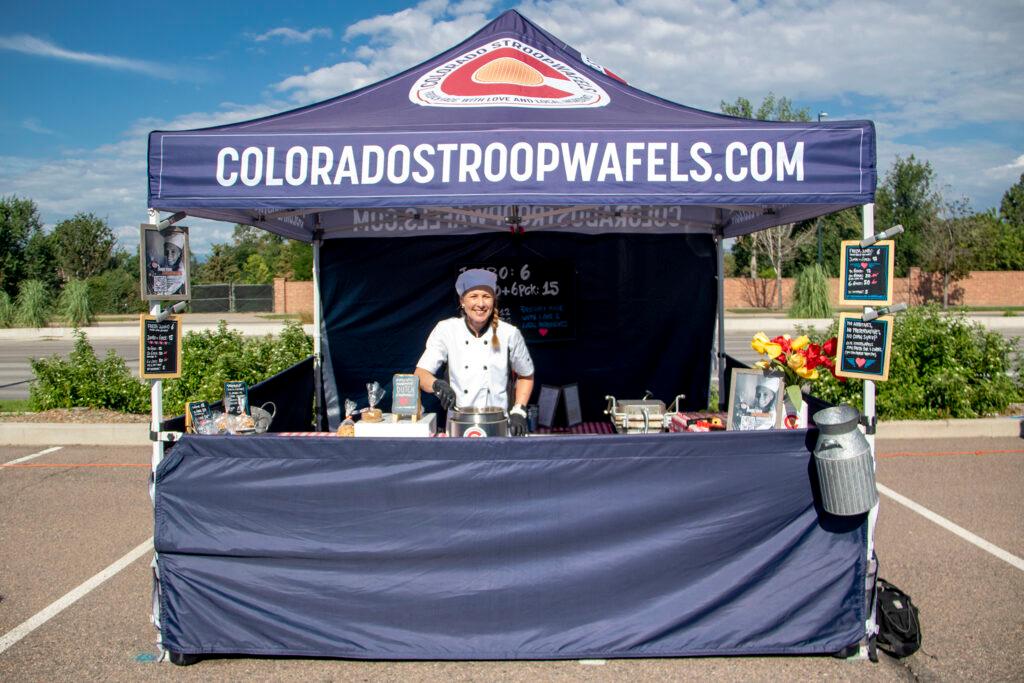
At her stall, Schmitz uses a stroopwafel iron, which looks like a big waffle iron, to press balls of dough into disks the size of a drink coaster and about a quarter of an inch thick. She slices the wafers lengthwise into even thinner halves, spreads warm caramel over the cut surface, then presses them back together.
One of Schmitz’s first customers on a Wednesday morning was Tanya Brewer, who stopped by to pick up a package of stroopwafels. When Colorado Stroopwafels opened, it became her go-to place to replenish her supply. Compared to store-bought versions, “these are much fresher,” Brewer said. “They just taste more natural, and sweeter and delicious.”
Part of that could be the result of Schmitz’s ingredients.
“I don’t use any additives or preservatives,” Schmitz said, and she sources most of her ingredients locally. “In combination with the freshness, that makes everything better than you can find in the store.”
Some historians trace stroopwafels back to Dutch “armenkoeken,” or poor people’s cookies, which were made from bakery crumbs glued together with syrup. The modern version was likely invented in Gouda in the late 1700s, and some of today’s most well-known stroopwafel manufacturers formed in the mid 1800s.
Stroopwafels have been a Dutch staple for hundreds of years, but packaged stroopwafels have only taken off in the United States in the past decade.
Eef Tulp opened Dubbel Dutch, a Dutch grocery and sandwich shop in Denver, 19 years ago. At the time, her store was one of the only places in the region to buy stroopwafels.
She said two events catalyzed stroopwafel consumption in the United States.
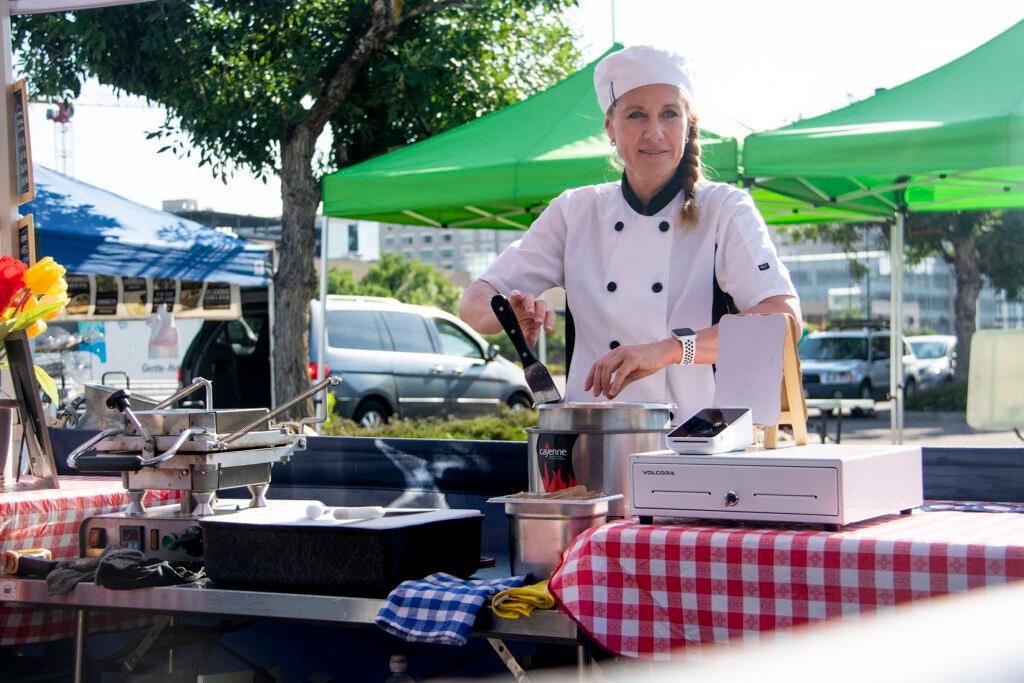
The first was when “Lance Armstrong started promoting it for cyclists, as a good source of energy,” Tulp said. He became a part owner of Honey Stinger, the Steamboat-based energy food company, in 2010, and represented the company until 2012.
The second was when United Airlines started serving stroopwafels on flights in 2016.
Google searches for stroopwafels have been climbing since then. When McDonald’s announced a stroopwafel McFlurry flavor in 2019, those searches spiked.
But as some Dutch people will tell you, the stroopwafels at most grocery stores in the United States just aren’t quite right.

“I don’t know what’s different, maybe the sugar or something … or a different recipe?” Tulp said. “But as Dutch people we say, eh, that’s a knockoff.”
Unlike chocolate chip cookies, which can be made with or without oatmeal, and baked flat and crunchy or fluffy, stroopwafels have few variations. When recipes stray too far from what is considered traditional, Dutch people can tell the difference.
Tulp suspects American grocery chains saw the growing popularity of stroopwafels and the prospect of growing their revenues, and “wanted a little piece of that cookie, pun intended,” Tulp said.
But despite the stroopwafel’s availability in grocery stores, the fresh versions that Schmitz sells are difficult to find in the United States.
For one, stroopwafels are challenging to make.
“It’s not just a simple cookie,” said Schmitz. “You have to make your dough. You have to make your caramel. It’s not just something I put in the oven and wait for whatever minutes and that’s my cookie.”
Apart from the technique, stroopwafels require a special iron, which needs to be imported from the Netherlands. All of those are barriers to home bakers. Even in the Netherlands, fresh stroopwafels are so abundant that few people attempt them at home.
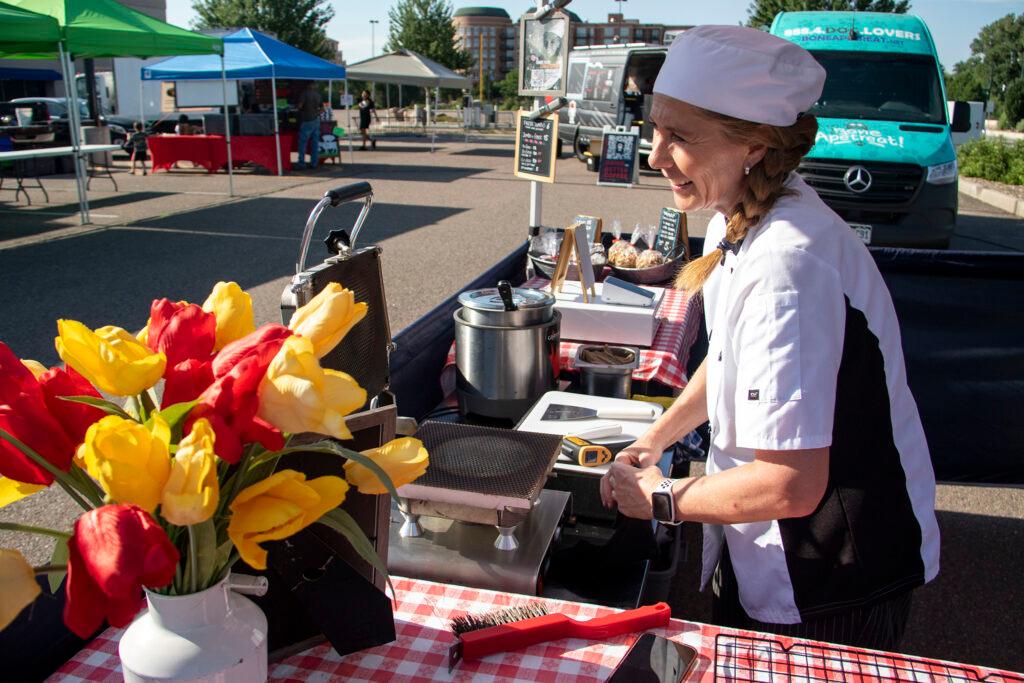
On top of that, “it has to be really a Dutch person to make that,” Tulp said, “to have the desire to start making that, I think, to have the right recipe and all that. And a lot of Dutch people who come here have something else to do than making stroopwafels.”
For her part, Schmitz is happy to introduce market goers to fresh stroopwafels and to share a piece of Dutch tradition that they may otherwise not encounter.
When given the choice, Schmitz would always choose a fresh stroopwafel. But if premade versions are the only available option, Schmitz recommends to “warm it up on a cup of coffee, so the caramel will warm slowly, so you have more flavor in your cookie.”

